The solar industry has fundamentally transformed. It’s no longer the volatile, niche market it once was; it’s a behemoth of global power generation. Indeed, the world now invests nearly twice as much in clean energy as in fossil fuels, with solar leading the charge.But for the astute investor, the question isn’t whether to invest in solar, but where to allocate capital to catch the next wave of exponential growth. The Future of Solar Energy is less about placing simple bets on panels and more about funding the complex ecosystem that makes solar reliable, scalable, and indispensable.
The “smart money” is shifting its focus from raw megawatt capacity to grid integration, technology diversification, and resilient manufacturing. Here are the five key areas attracting the most sophisticated capital as we look toward 2030 and beyond.
1. The Undisputed King of New Investment: Energy Storage
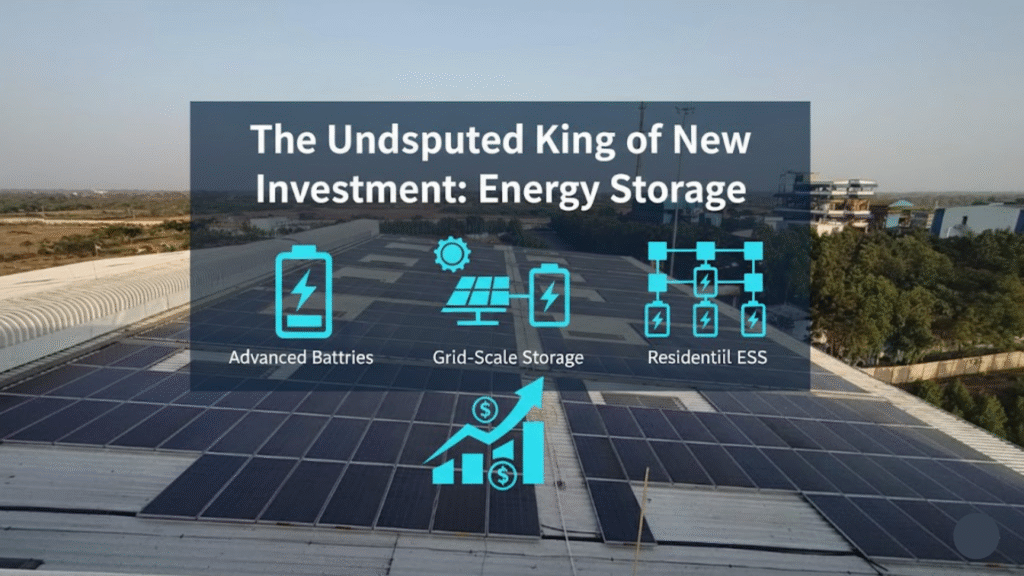
Solar power’s Achilles’ heel has always been intermittency. When the sun sets, the power stops. This fundamental challenge has made Energy Storage Systems (ESS) the single most crucial area of investment for the Future of Solar Energy. Smart investors are treating battery storage not just as an add-on, but as a mandatory component for every major solar project.
Why Storage is the Next Frontier:
- Grid Parity and Stability: As solar generation saturates grids (leading to negative power prices during peak sun hours in some regions), batteries are essential for time-shifting power, ensuring the system remains stable and valuable 24/7.
- The Technology Race: While Lithium-ion (Li-ion) dominates the market now, significant capital is flowing into next-generation technologies that promise lower cost and better sustainability.
| Storage Technology | Primary Focus & Benefit | Investment Outlook |
| Solid-State Batteries | Improved safety, higher energy density. | High R&D Funding |
| Flow Batteries | Ideal for multi-hour and long-duration storage. | Strong Commercial Growth |
| Green Hydrogen | The ultimate solution for seasonal/multi-day storage. | Massive Utility Potential |
The investment focus is on companies specializing in BESS integration, and the software platforms that manage energy flow.
2. Decarbonizing Industry and Commerce: Distributed Solar Power
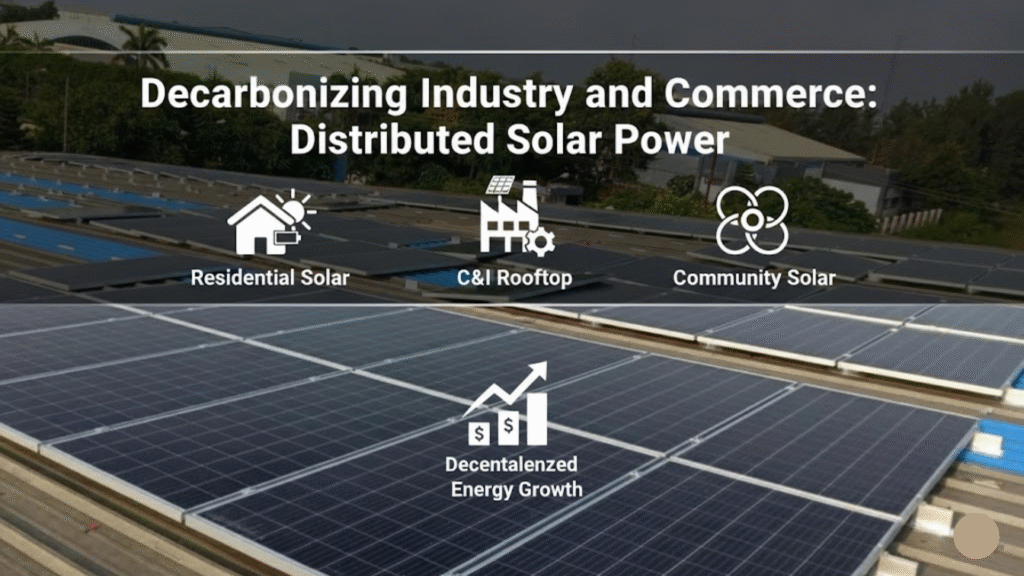
The Future of Solar Energy is increasingly decentralized. Distributed generation (power generated close to consumption) includes Commercial & Industrial (C&I) rooftop solar and residential installations.
This segment represents a double win: faster deployment and direct protection against rising utility prices.
Key Investment Models for Distributed Solar:
- C&I Power Purchase Agreements (PPAs): Companies guarantee long-term power purchase, giving investors reliable revenue streams.
- Solar Leasing: Financing models that remove the high upfront capital cost for the homeowner or business.
- Community Solar Projects: A single installation shared by multiple local subscribers, democratizing access to solar savings.
In markets like India, government initiatives (like the PM Surya Ghar Muft Bijli Yojana) are creating massive, guaranteed demand for residential rooftop solar, making installers and financiers in this sector highly attractive.
3. Beyond Efficiency: Investment in Next-Generation Materials
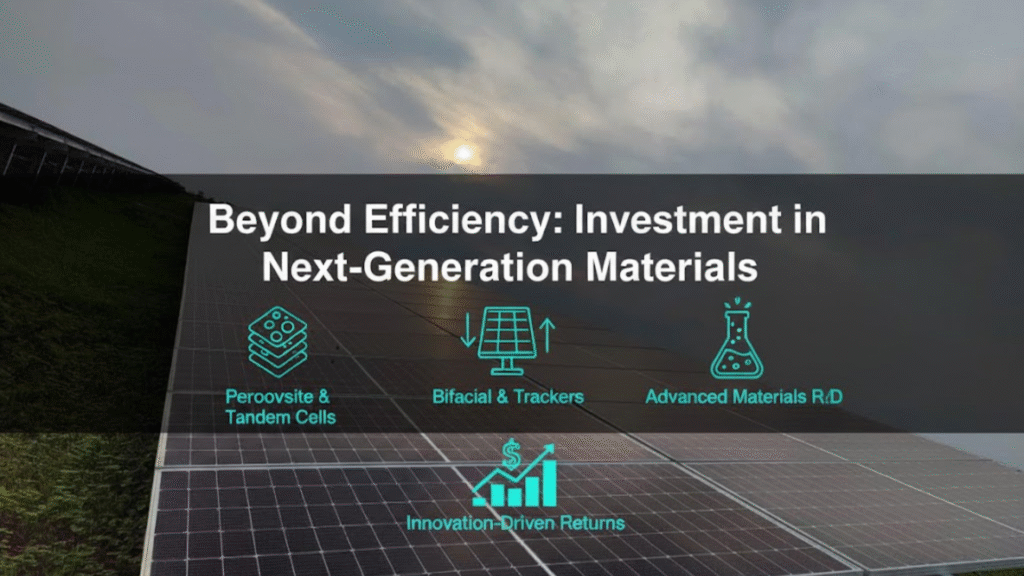
The relentless decline in solar panel costs has been driven primarily by manufacturing scale. However, the next frontier for cost reduction and performance gains lies in material science and module design. Investors are now seeking out companies poised to disrupt the decades-long dominance of monocrystalline silicon.
Next-Gen Technology Bets Attracting Funding:
- Perovskites: These next-generation cells promise significantly higher efficiency and lower manufacturing costs as they can be printed onto surfaces.
- Tandem Cells: Stacking Perovskites atop traditional Silicon cells, this combination has set world records for solar conversion efficiency.
- Bifacial Modules: These innovative panels capture light from both the front and back, dramatically increasing total energy harvest in ground-mounted systems.
Advanced Tracking Systems: Sophisticated software and hardware that automatically tilt panels to follow the sun’s path, boosting output by up to 30%.
4. Domestic Manufacturing and Policy Support Securing the Future of Solar Energy
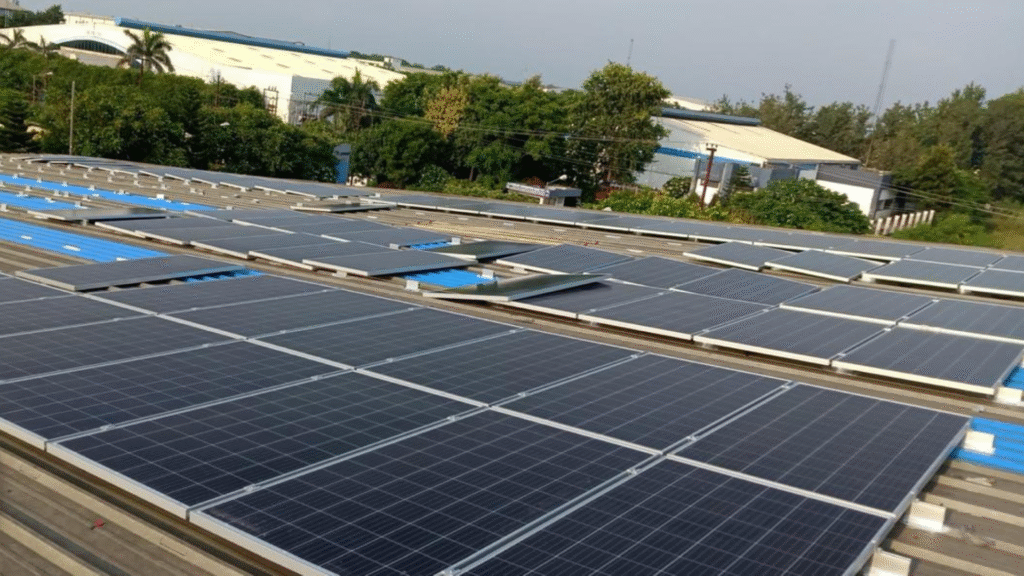
Recent geopolitical and supply chain upheavals have highlighted the risks of concentrating manufacturing. Governments worldwide, particularly in the US (via the Inflation Reduction Act) and India (via the Production Linked Incentive (PLI) scheme), are investing heavily in localizing the solar supply chain.
This is a defensive yet highly profitable investment trend due to guaranteed domestic demand and subsidies.
Key Areas for Manufacturing Investment in the Future of Solar Energy
- Upstream Components: Investment flowing into the entire solar value chain, from polysilicon and wafers up through high-efficiency cells and modules.
- Automation and Robotics: Funding solutions that reduce labor costs and increase the consistency of manufacturing.
- Component Diversification: Investing in manufacturers that produce necessary non-panel components, such as domestic inverters and mounting structures.
5. Smart Grids and Digitalization: Integrating the Future of Solar Energy
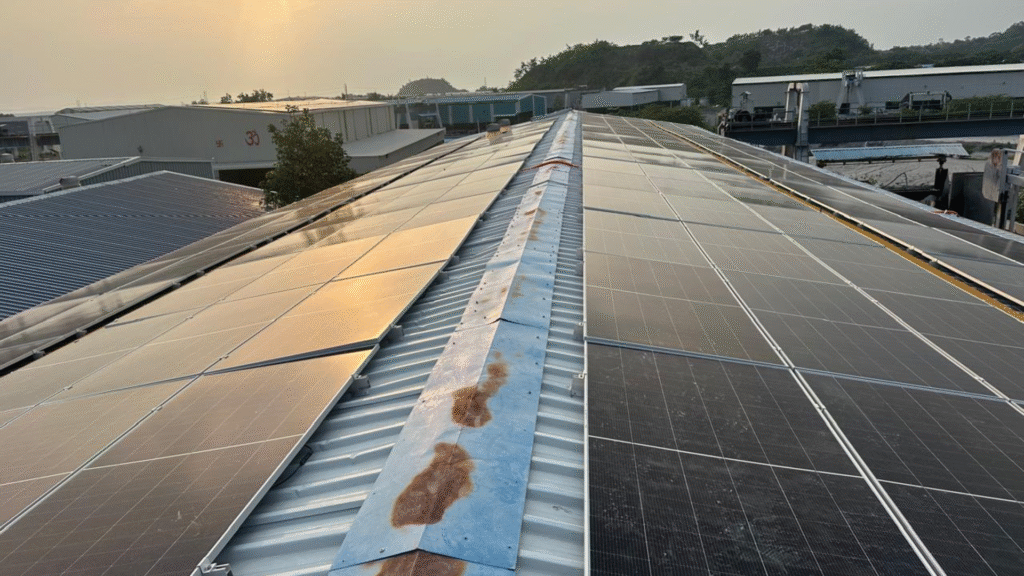
All the solar panels and batteries in the world are useless without a smart, robust electrical grid to manage them. As renewable energy floods the system, grids need to become bidirectional, dynamic, and intelligent. The Future of Solar Energy fundamentally depends on this modernization.
| Digital Solution | Investor Benefit | Impact on Grid |
| Virtual Power Plants (VPPs) | High-growth software segment, scalable. | Aggregates distributed energy (e.g., home batteries) into one dispatchable asset. |
| Predictive Analytics/AI | Reduces operating risk and maintenance costs. | Forecasts solar production and optimizes storage/discharge patterns. |
| Grid Modernization | Stable, government-backed utility contracts. | Upgrades transmission systems to handle variable, distributed energy flow. |
Frequently Asked Questions (FAQ)
Q1: Is the solar industry an overvalued investment right now?
A: The core manufacturing segment is experiencing overcapacity, which has driven down panel prices. However, the services and technology segments (storage, software, smart grids) are still experiencing rapid, essential growth. Smart money is shifting from panel producers to system integrators and technology enablers.
Q2: How does government policy affect my solar investment returns?
A: Policy is a critical factor. Incentives like tax credits, feed-in tariffs, and manufacturing subsidies (like India’s PLI or US’s IRA) can significantly lower project costs and guarantee revenue, reducing investor risk and making returns more predictable over the long term.
Q3: What is the biggest risk in the Future of Solar Energy?
A: The biggest non-financial risk is the speed of grid modernization. If grid upgrades and new transmission infrastructure lag behind the pace of solar installations, integration challenges will lead to energy waste and curtailment, negatively impacting project economics. Investment in grid tech mitigates this risk.
The investment landscape for solar has matured. The era of simply funding utility-scale farms based on cheap panels is ending. The successful investment strategies for the Future of Solar Energy will be holistic, focusing on the three pillars of reliability: Storage, Manufacturing, and Digitalization. By looking beyond the panel and into these core infrastructure and innovation segments, you can ensure your capital is truly following the smart money.


